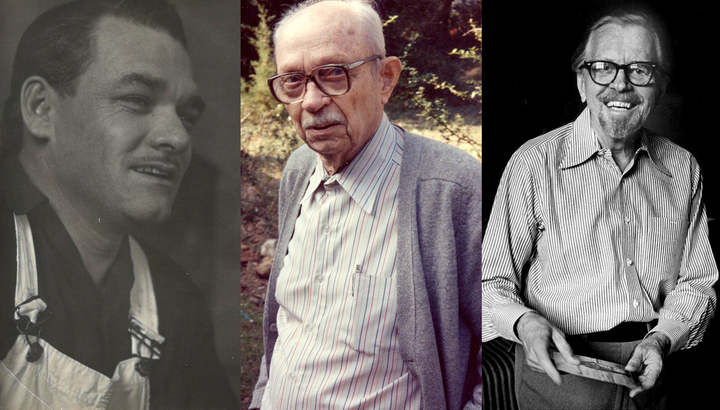The Carter Blog
Carter ARTicles
Exploring the Carter’s archives online
Jul 13, 2022
I get a lot of phone calls from people who’ve heard stories.
Often family legends told to skeptical relatives, and they call us to find out if we’ve heard this story, and can we provide evidence.
I became an archivist because I wanted to be an archaeologist, but I’m allergic to sunscreen, so I opted to avoid the sunlight and work in a climate-controlled basement with no windows and a lot of paper. I’m a vampire. Does it even rain anymore? I’m also nosy and reading the personal love letters from two long-deceased souls who pour their hearts out to each other when they think no one is looking, well, it’s nothing short of juicy and the jackpot for archivists.
For many years, in order to find a letter from our archive a researcher or an archivist had to physically retrieve a box from a storage area and bring it out to the reading room for research. We were limited to how many people we could help, and by the limited research hours available.
And then we digitized (mostly) everything!
When our new online collection debuted last year, the Carter included not only their entire art collection, but also the archives.
By clicking on the Filters option, a new menu appears, and that’s where the fun can really begin. By selecting the Archive button, users can view the contents from 11 archival collections held at the Carter, a number that continues to grow!
Our archive holds more than just paper documents, but also artifacts from an artist’s career like a ship model built by Scott Gentling, or Clara Sipprell’s Business Sign, and family memories like a child’s thank you note, "Thank you so again for the wonderful pies and home made bread and ice cream, I-LOVE-YOU."
So, let’s say you’re looking for all letters in the collection written from a specific city, say, Corpus Christi, Texas, for this example. You can type that into the Search the collection box.
It returns 113 hits! That’s a little bit too much for me to look through. Luckily, the metadata (information about the archival item) we gathered about each item in our archives can help us narrow our results. Let’s imagine the letter you’re looking for was written sometime in the 1940s. Using the date filter, we can narrow down our results to only items from 1940 to 1950. Once we do that, the eight results returned are a lot more manageable. You can even narrow down your search further by selecting a Collection Name, or the Genre/Form of the item. Click the arrow icon to the left of the letter to download a PDF for a closer view!
It took years and a team of catalogers and archivists working behind the scenes to compile information about each digitized item in our collection, and all that work helps YOU find what you need.
If you’re familiar with archival research you may be asking, “What about a finding aid?” I’m happy to report that all of these collections have an accompanying finding aid that offers more information about the papers including a brief biography of the artist, and a list of boxes and folders. These tools help facilitate researchers, or curious investigators, in finding what they need and providing context. You can access our finding aids on our Archives page.
Another layer of our online archives collection is the accession number. When we assigned numbers, we made sure they related to their physical arrangement, and act as a breadcrumb for visitors.
Stay with me now.
Every number represents a part of this letter’s location in our archives, there are no lost needles in this haystack!
Let's break this down:
A2007.069 is the collection number for the Laura Gilpin Papers
05 is the series
55 is the box number
007 is the folder number
003 is the item number
So, A2007.069.05.55.007.003 can be found in the Laura Gilpin Papers in box 55, folder 7. This becomes helpful for people who need to do citations for research, and in case we ever need to pull the physical document for conservation or an exhibition.
In the finding aid, this same letter to Laura Gilpin appears under this heading:
If you wanted to look at all the letters from this folder, you can enter A2007.069.05.55.007 into the Collection search box. See how the 11 letters in the folder are returned?
By making these collections available online, we’re inviting you in to explore this often-hidden part of our Museum. You don’t even need an appointment!
But there are some things you can’t experience through the screen. The feeling of brittle office paper from the '40s, the slicing sound of turning pages, the charred smell of a Roman Bronze Works ledger, the softness of handmade stationery, the connection with holding an object and experiencing the memories of all those who’ve held it before—we can’t duplicate that experience yet, but we can answer questions, confirm family legends, open the door into the life of an artist, and help you understand the memories behind their art.









